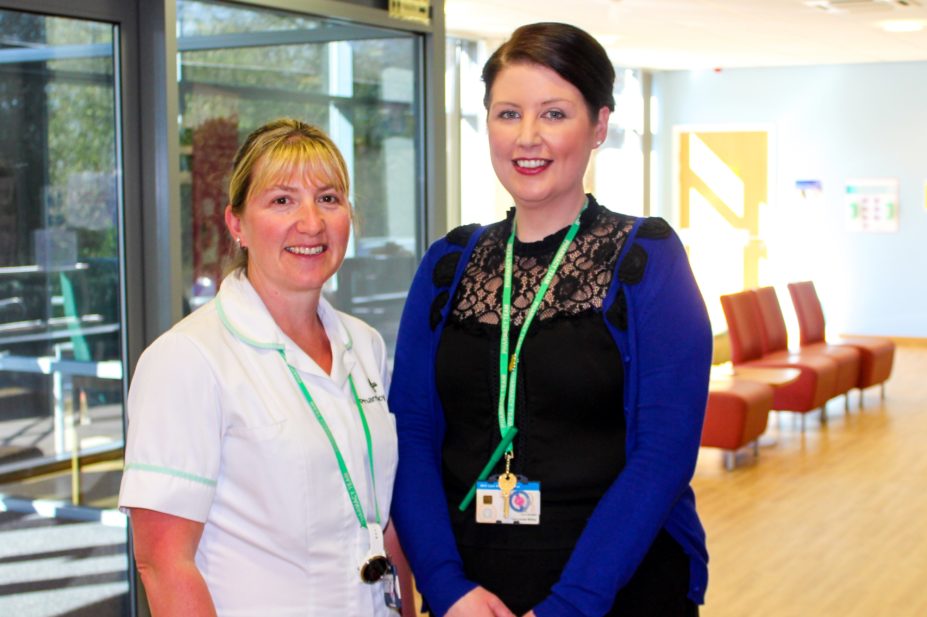
Tara Molloy
I work as an independent prescribing pharmacist to assist the anaesthetic and surgical multidisciplinary team (MDT) at Wirral University Teaching Hospital (WUTH) streamline the patient’s journey through medicines optimisation. This is a role previously undertaken by medical staff; however, we have found that a prescribing pharmacist generates greater benefits than a doctor through fewer prescribing errors and ensuring administration of critical medicines required prior to surgery.
On a day-to-day basis, I manage any surgery-related medicines queries, supply issues and formulation enquiries, but my role is also to act as the main prescriber of a patient’s regular medicines and thromboprophylaxis for 11 theatres on the main Arrowe Park site.
WUTH is a large acute teaching hospital which performs 18,000 elective surgical procedures over two sites annually. Electively WUTH specialises in treating colorectal cancer, renal cancer, trauma and orthopaedic, ear nose and throat, and maxillofacial surgery. The trust also specialises in compromised patient surgery for individuals with a disability, so the diversity and complexity of patients I care for is vast. The work at WUTH was shortlisted for an award in 2019 by the British Medical Journal.
08:00 – start
Each morning I attend the surgical elective admissions lounge, where I review the medications prescribed for patients brought into theatre at 08:30. Prior to surgery, patients attend a preoperative clinic visit where a member of the pharmacy team will initiate a medicines reconciliation. Together, with a medicines management technician, I complete the medicines reconciliation process on the day of surgery. This includes checking adherence to the preoperative medicine instructions given to them during their preoperative visit.
I prescribe the patients’ regular medicines before they go into theatre using the trust’s electronic prescribing system, assess the patients’ own medicines for use during their inpatient hospital stay, and order any missing items to the destination ward for use post-operatively.
Today, one patient has inadvertently taken their morning dose of clopidogrel. In certain circumstances this may result in the patient’s procedure being deemed too high risk to proceed, and the operation cancelled or rescheduled. We highlight this, and the indication for clopidogrel, to the surgical and anaesthetic team for review.
Another patient did not take their morning beta blocker dose. I prescribe this to be administered before theatre to improve patient safety during the procedure, and improve surgical outcomes and patient recovery.
For all patients, we prescribe and suspend their baseline analgesia; meaning the drug is visible on their electronic prescribing system, but not active on their prescription chart. This highlights to the anaesthetic team the patient’s current analgesia needs, allowing post-operative pain plans to be put into place before the patient leaves the theatre setting. This reduces the number of referrals to on-call teams, while enhancing the patient’s surgical experience, and allows for activities such as physiotherapy to be undertaken as soon as possible without pain interfering.
A large proportion of the morning also involves prescribing and ensuring the appropriate timing of administration of ‘pre-medications’. Every patient undergoing elective surgery at WUTH receives paracetamol 1g orally a minimum of 30 minutes prior to surgery, if they have not taken paracetamol-based products within the previous four hours. This reduces the total number and cost of intravenous medicines used in the surgical setting. As a centre for trauma surgery, I am also frequently asked to review pain scores and analgesia in patients who have been referred directly from the fracture clinic to the surgery unit, whose surgery may be delayed to allow an adequate ‘nil by mouth’ period to ensure sufficient pain control in the perioperative period.
10:00
I am called to review a patient on the surgical unit with severe hypertension linked to anxiety or ‘white coat’ syndrome associated with their surgical procedure. I ensure they are not known to be hypertensive in the community and their symptoms are directly related to situational anxiety. As their blood pressure is so high at 210/100mgHg, they are unable to undergo elective surgery. Once I have established that the patient’s appropriate consent form for the surgery is signed and in date, I review when the patient is due for theatre and help reduce their anxiety and blood pressure through appropriate prescribing of benzodiazepines, such as sublingual lorazepam or oral diazepam.
While on the surgical unit, I am asked to prescribe a stat dose of methylene blue dye for a patient undergoing a parathyroidectomy the next day. Methylene blue is taken up by the parathyroid glands and allows the surgeon to perform this complex surgery with greater level of precision. I review the patient’s regular medicines for serotonin interactions and prescribe the appropriate dose of methylene blue against ideal body weight and renal function for administration 30 minutes prior to surgery. The patient will also require premedication with antiemetics prior to starting the infusion, owing to its known side effects of nausea and vomiting.
12:00
I screen the perioperative venous thromboembolism (VTE) risk of patients on tomorrow’s theatre list. I review each patient’s past medical history, laboratory function tests, such as full blood count and urine and electrolyte analysis, and prescribe a suitable dose of low molecular weight heparin (LMWH) preoperatively. The dose and timing of the LMWH must allow the safe use of certain anaesthetic routes of administration, such as spinal anaesthesia.
14:00
Each afternoon I undertake work for the preoperative clinic, where I review patient case notes to offer preoperative advice on medicines. This can range from withholding oestrogen-containing products such as hormone replacement therapy because of VTE risk, to advising on when to perform a complex procedure in a rheumatoid arthritis patient who receives treatment with yearly rituximab infusions, to limit the risk of infection or non-healing of surgical wounds. The pharmacy team speaks to patients — either in person or over the phone — to ensure any critically relevant information is up to date and documented in the perioperative plan.
I perform an enhanced CHA2DS2-VASc risk assessment for a patient on warfarin to determine their risk of clotting or bleeding during the perioperative period. I recommend that the warfarin be withheld five days before surgery, and they be covered with the treatment dose of LMWH once the patient’s international normalised ratio is below 2.
15:00
I review patients undergoing colorectal cancer surgery for the enhanced recovery clinic, which takes place weekly. The clinic focuses strongly on pre-habilition, which aims to optimise patients’ baseline health prior to surgery, and involves an MDT approach of not only optimising patient medicines, but also physical health and strength through physiotherapy, and holistic needs by specialist cancer nurses. This approach results in better and quicker post-operative recovery.
I undertake full medication reconciliations and offer advice on altering medicines in the preoperative period. I also supply and counsel patients and their family members on the use of surgery-specific medicines. This includes the use of oral bowel preparation medicines the day prior to surgery, and, for some patients, how to control comorbidities such as diabetes during this period. We counsel on the use of LMWH for VTE risk reduction and teach patients or their family members to self-administer this medicine the evening prior to surgery.
I counsel patients on good oral hygiene before surgery and supply them with mouthwash (to reduce the incidence of post-operative lung infections), as well as specialist preoperative carbohydrate-loading drinks (to reduce the time the patient’s body spends in starvation mode after major surgery), for faster recovery and decreased length of hospital stay.
16:00 – finish
I am currently expanding my clinical knowledge by undertaking a clinical diagnostic module at university. This is because the pharmacist’s role in the perioperative setting may be expanded to diagnose pre-operative anaemia and help anaesthetics refer patients for further testing, if appropriate.
Just before I go home, I check the the haemoglobin levels of patients planned for major blood loss elective procedures, and I organise and prescribe iron infusions for patients who cannot tolerate oral iron.
Box: Are you interested in a similar role?
- The pharmacist prescriber role in perioperative medicine is expanding rapidly, with lots of NHS trusts advertising. The role is generally set at Agenda for Change band 8A as you will work both within a large multidisciplinary team and as an independent clinician;
- To fully appreciate the diversity and complexity of surgery, if undertaking a surgical rotation at band 6 or 7 level, I recommend to ask for exposure and time in theatre with both surgeons and anaesethetists;
- Organisation, prioritisation and communication skills are key as your clinicians may be in theatre all day so opportunities to discuss issues are limited;
- You must be able to work under pressure as during the clerking in process there is a short period where multiple clinicians are trying to see multiple patients on the same unit;
- Ultimately, you need to be compassionate and display empathy, and always remember surgery is not a natural process so your patients may be very anxious and frightened.
